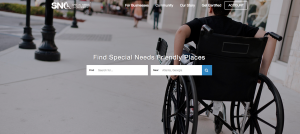Chances are you’ve heard the expression the “children are our future”. We need to work hard to ensure that the children of today grow up to build a better world of tomorrow. And the only way to make this happen is through top notch education provided to as many children as possible. If you have a child who is in school and want to thank the school for what it has done for your child, there are a few things you can do. Here are a list of ways to give back to your child’s school:
1) Volunteer in the classroom
Teachers have a lot on their plates, and they often need volunteers. Parent volunteers can help out in the classroom by assisting with hands-on classroom activities, reading to the students, or completing tasks such as correcting students’ papers. The teacher will be extremely grateful, and there will also be a lovely bond between the parent and the teacher.
2) Volunteer After School
Whenever the budget of a school district gets cut, the first things to go are after school activities. It is unfortunate that these enriching activities such as sports, music programs and other activities that allow children to explore their passions are being cut. But the programs are much less likely to disappear if parents volunteer to help out. If your child is involved in an afterschool activity, ask the coach or leader if he or she needs any help. This will allow to you spend time with your child and your child’s friends while also lending a hand to programs that need assistance.
3) Donate School Supplies
All too often, teachers need to pay for school supplies out of pocket because they are working on tight budgets. there is always a high demand for everyday supplies such as pencils and paper. It is rare for a teacher’s annual stipend for supplies to last longer than one or two months. If you’re in an office supply store, buy some supplies for your child’s classroom. Your child’s teacher will be extremely grateful.
4) Join the PTA
The PTA, or the National Parent Teacher Association, is a great way to get involved in your child’s education. If your child’s school is not affiliated with the PTA, it probably has something similar such as “home and school” or a booster club. These are independently operated clubs that function in a way similar to the PTA. If you help out in the PTA, or the equivalent in your child’s school, you will be able to get to know your child’s teachers and build a strong network with the other parents. You will also be able to stay up-to-date on the happenings within the school, and the school will thank you for your help.
It is clear that your child’s education is important to you. And one of the best ways to make sure your child gets the best education possible is by helping out within the school. By staying in the know in your school community and assisting the school’s faculty, you are showing your child how important education is, and you’re working to give the future generations an enriching educational experience.











